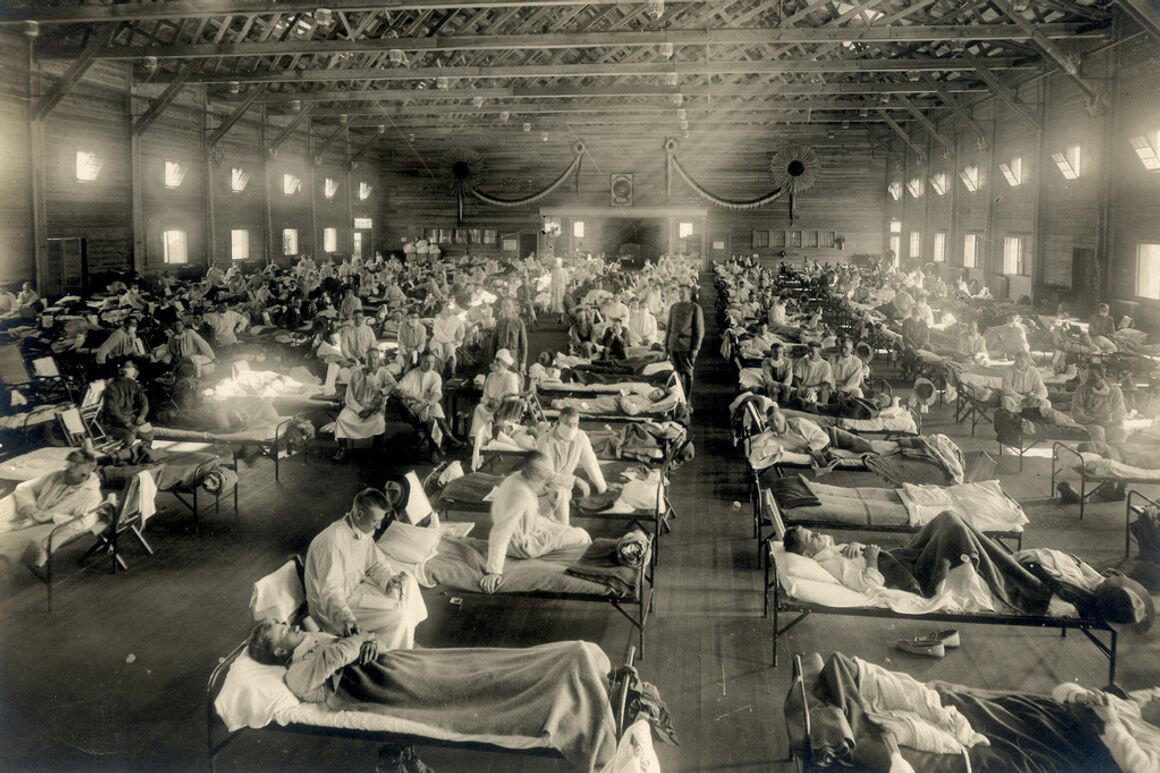- Beranda
- Berita Luar Negeri
'Spanish Flu' seharusnya dinamai 'Kansas Flu'
...
TS
Akong.Jiugui
'Spanish Flu' seharusnya dinamai 'Kansas Flu'

Many articles online declare the Spanish Flu the greatest pandemic in history. It dragged its heels among the populace for almost two years in three waves (the middle wave being the most deadly), killed in the neighborhood of 50 million people – more deaths than both World Wars combined – and affected about a third of the world’s population.
An interesting footnote on that: it isn’t called the Spanish flu because it started in Barcelona or anything. Spain was just one of the big hotspots for the thing – so maybe we should call the newest virus “New York City Flu.”
No, it actually started – as likely as not – in little Haskell County, in south-west Kansas.
Almost every county in Kansas is shaped like a square, which must be a dream for cartographers but a nightmare for the kid who has to name the counties by their shape for his teacher: squares or rectangles, with an occasional county shaped like Utah turned upside down just to give the poor kid a chance.
I am looking at a map of Kansas right now. It looks a state inspired by Tetris.
The county seat is a place named Sublette, which makes me wonder if the courthouse is renting from a guy who’s renting it from someone else.
The entire county numbered 3,997 in 2018, about the population of National Avenue (if you include the voters in the cemeteries), so it’s pretty remarkable that such a tiny place has the honor – or the curse – of being the place where some poor farmer caught a bug that planted so many people in their graves.
We’re not sure why fate chose such an out-of-the-way place as ground zero. Some biologists and scientists suspect the preponderance of hogs (North Carolina is number two in the nation for that today – think about THAT) and the fact that 17 bird migratory routes pass through the little county. The article I am reading (in Vintagenews.com) suggests that it was some of these 17 varieties of little feathered fiends who did us all in.
A doctor there, Loring Miner, began to notice an influenza that was far more devastating than the common flu, and he wrote to the editors of Public Health Reports to warn them. The symptoms were worrying, he said: “violent headaches and body aches, high fever, non-productive cough...” (I didn’t know there was a thing as a productive one).
Dozens of patients were soon dying – and while the virus would mainly target the elderly and (unlike our COVID-19) children under five to slay, it was killing “the strongest, the healthiest, the most robust people in the country (who) were being struck down as suddenly as if they had been shot.”
On the northeast side of the state was a military training camp named Camp Funston. Started in 1917, it was training our doughboys who would soon be in Europe, charging into machine gun bullets in the trenches of No Man’s Land.
Albert Gitchell was an army cook there – I don’t know if he was from Haskell. On March 4th, 1918, he skipped breakfast to report to the sick bay, complaining of cold-like symptoms – or so says History.com. “By noon, over 100 of his fellow soldiers had reported similar symptoms, marking what are believed to be the first cases in the historic influenza pandemic of 1918, later known as Spanish flu,” the site reports. By the end of the month 1,100 troops were hospitalized and 38 died.
Soon, around the nation, prisons and army camps were reporting outbreaks. Even so, we sent 84,000 soldiers to Europe that month and another 118,000 the month after. By June there were 81,000 cases in England; by summer’s end it had been passed along to Germany. It didn’t take much longer to spread across the world.
When the soldiers returned home at the end of 1918, they brought a mutated form of the virus along and spread it for its second round over a period of three months, where it infected 28 percent of our population. This version could kill anyone, and do it in 24 hours, killing them with fevers, hemorrhaging and pneumonia, drowning them with fluid in their lungs.
European doctors who dissected their dead soldiers described lungs with damage similar to that of poisonous gas.
https://www.newbernsj.com/news/20200...ed-kansas-flu
Diubah oleh Akong.Jiugui 04-05-2020 11:15
nona212 dan 22 lainnya memberi reputasi
23
1.1K
19
Komentar yang asik ya
Mari bergabung, dapatkan informasi dan teman baru!
Berita Luar Negeri
79.4KThread•11.3KAnggota
Urutkan
Terlama
Komentar yang asik ya